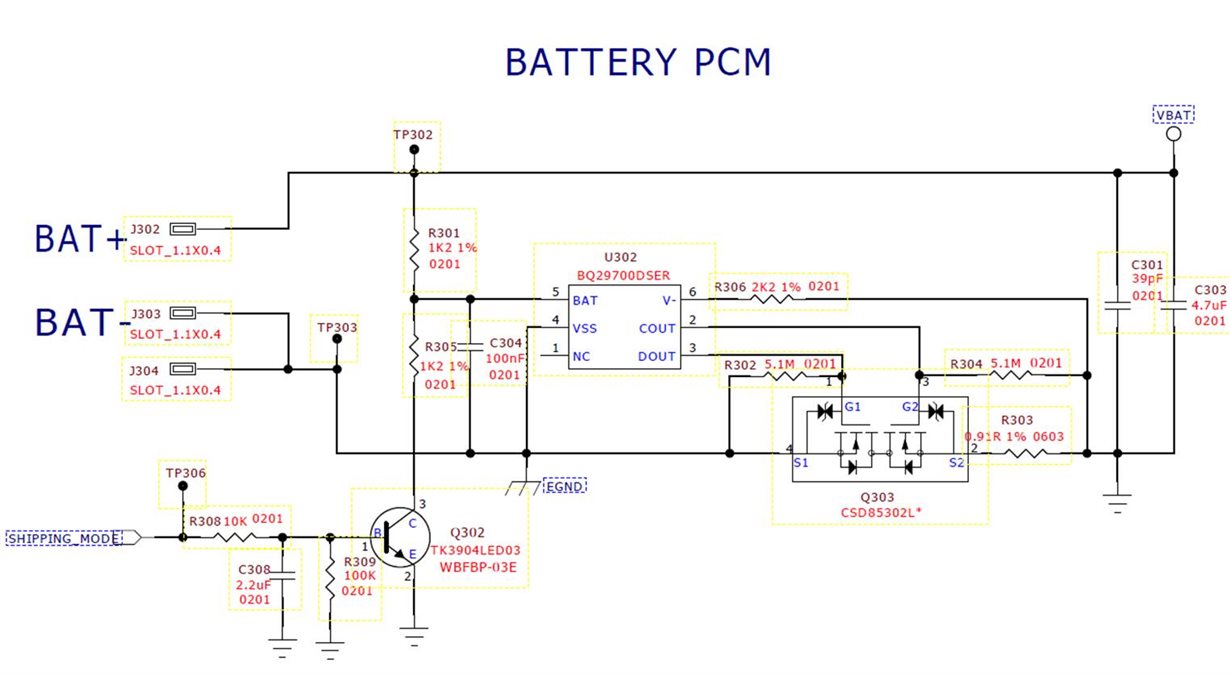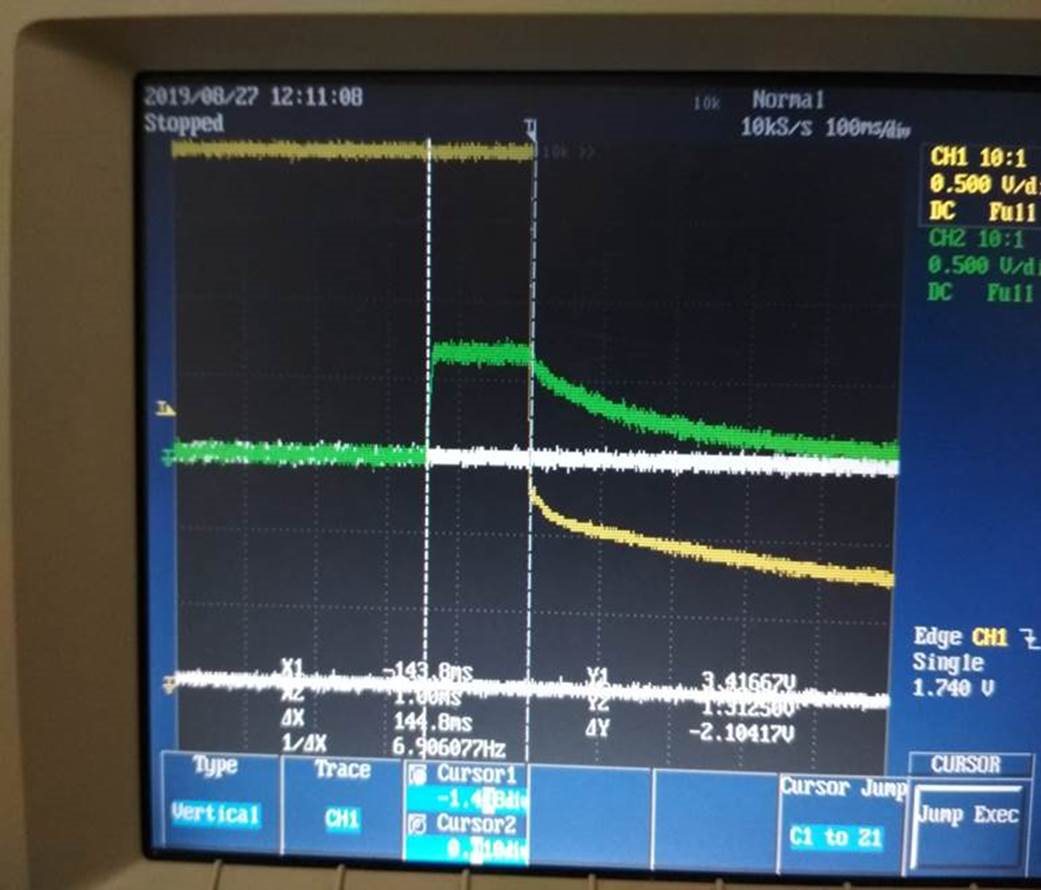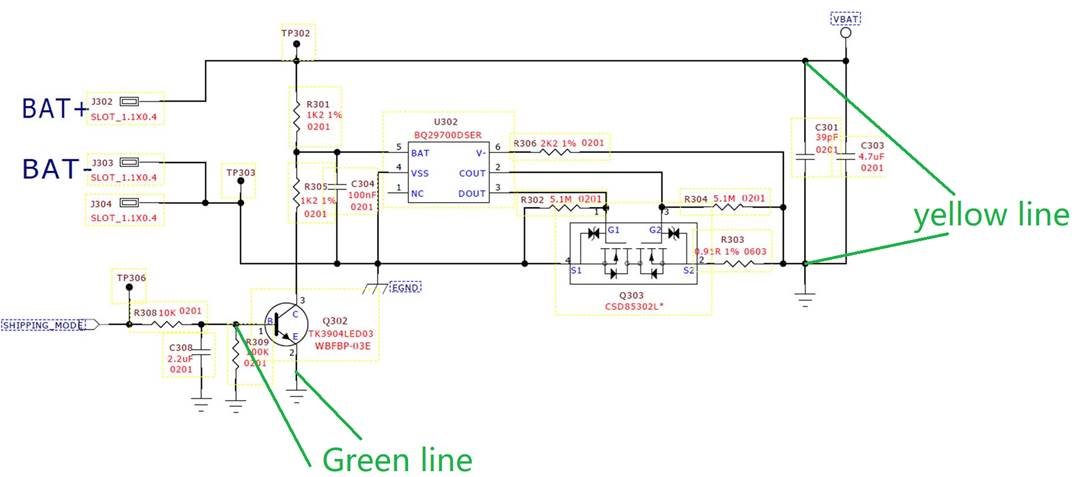Other Parts Discussed in Thread: BQ27000, BQ2970
Hi Sir,
Below is my customer circuit design for the BQ27000. The idea is to simulate a Under-voltage protection to activate the PCM cut-off when we enable the Q302 transistor to enter shipping mode.
Currently we are seeing some units where the battery levels go down and come up after 20ms after the entering the shipping mode. The bounce up did not happened in good unit.
Could you please help advise what could be the possible reason for this from the PCM IC point of view? We can see that the PCM starts to kick-in to cut off the VBAT power but somehow it exits this scenario and we did not apply the charger to the unit during the process.
Yellow Line Indicates Battery
Green line indicates Q302, which is controlled by PIO19 shipping mode pin from the microcontroller.
1. Shipping Mode - Problematic Unit
2. Shipping Mode - Working Unit
Thanks, Ian.






